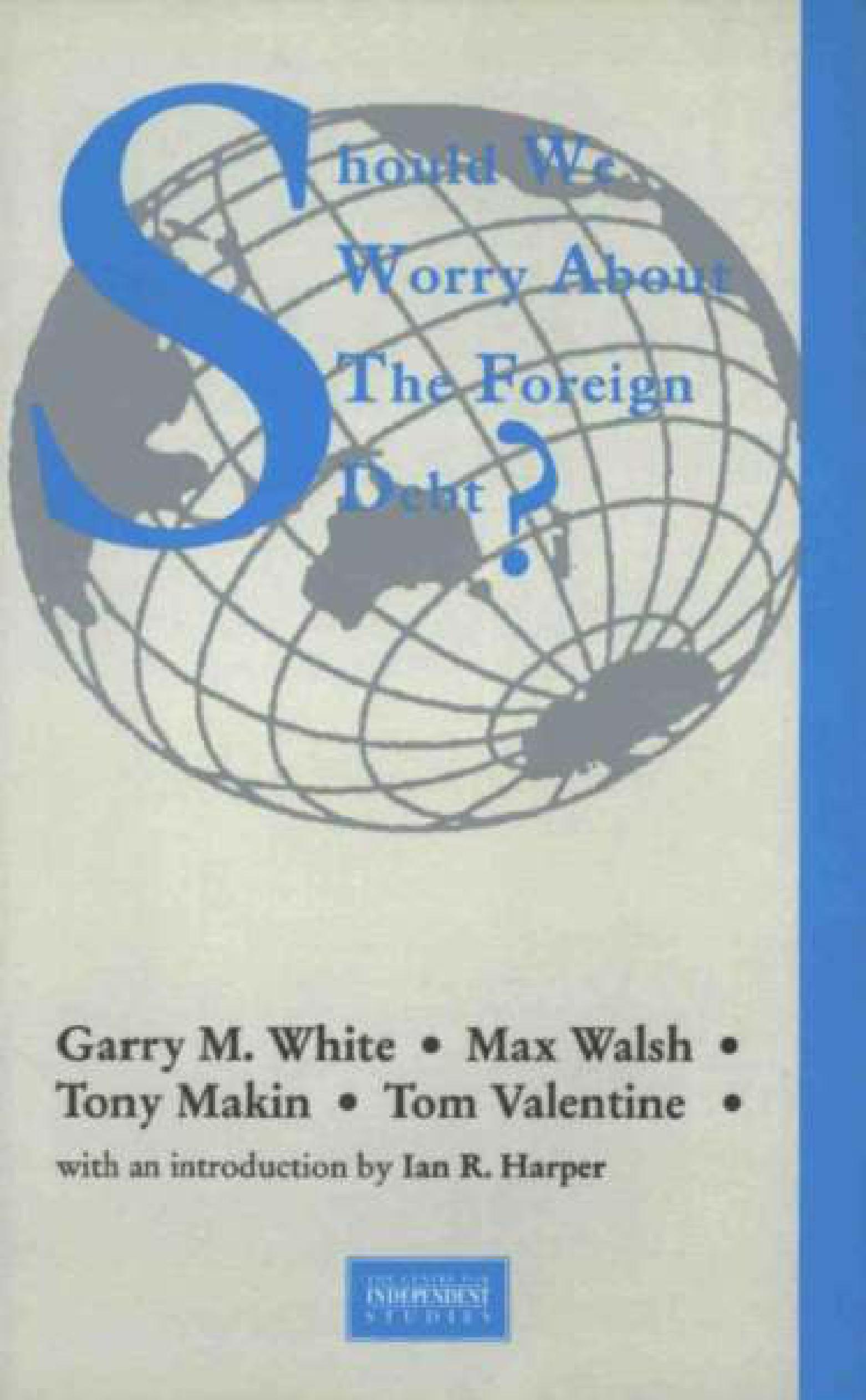
The question of whether or not the level of Australia’s foreign debt is a matter for concern has divided the Australian economics profession more profoundly that any other in recent memory. Individual economists whose views are indistinguishable on a range
of other topics find themselves on opposite sides of an often heated debate over the costs and consequences of Australia’s current account deficit and level of foreign indebtedness.
By end-December 1992, Australia’s net foreign indebtedness (that is, gross foreign debt minus the value of Australian assets held abroad) had reached an historic peak of A$l68 billion or around 43 per cent of GDP. Those alarmed by this figure point not only to its absolute level but also to the speed with which it was attained. At the beginning of the 1980s, the level of our net foreign indebtedness was less than 8 per cent of GDP. By the middle of the decade, it had reached 3 0 per cent, and was well on its way to its current level in excess of 40 per cent of GDP by 1990.
Those concerned about Australia’s foreign debt include, most significantly, economists working within the official bodies advising the federal government, namely, the Commonwealth Treasury and the
Reserve Bank of Australia. At the time, the main official justification for tightening monetary policy in the late 1980s was to counteract the impact of continuing boom time growth in the Australian economy on the current account deficit and the burgeoning level of foreign debt.
More recently, as the economy slowly emerges from the “recession we had to have”, official re-telling of the episode tends to emphasise inflation rather than the current account deficit and foreign debt as the main focus of macroeconomic policy. At the very least, this is convenient, since the technical end of the recession has brought us precious little improvement in the current account deficit and foreign debt ‘problems’, while the rate of inflation appears to have been lowered permanently.
It is no longer fashionable within official circles to admit bearishness on the foreign debt. Targeting monetary policy on the current account deficit, an anathema that brought Professor John Pitchford of the Australian National University out of the relative
seclusion of academic life into the public arena in 1989, appears after all to have been a mirage: a mere misconstruction on his part of the underlying intent of public policy and too literal an interpretation of official rhetoric.
Nowadays, the low level of Australia’s national savings is trumpeted as the source of our economic woes, and the hunt is on for ways to raise both private and public sector savings. This is, of course, the same emperor albeit dressed in a new suit of equally transparent clothes. As several of the papers collated in this volume point out, the difference between national savings and national investment is simply the current account deficit, at least part of which will add to the existing level of foreign debt. Official concern over Australia’s foreign indebtedness may not be admitted as readily but it is nonetheless prevalent.
To find those who believe our current account and foreign debt circumstances to be a benign reflection of more general economic conditions in Australia, one must search outside the public sector. Academic economists tend to form the majority among supporters of this view, although they are not exclusive. Several prominent private sector economists are advocates of the benign view of the current account and foreign debt.
Notwithstanding the support of private sector economists, the currency of the argument among academics is sufficient justification for some, especially financial journalists, to believe the opposite. It is also true that academic economists are divided on the question, as indicated by the authorship of two papers in this volume.
The media, both electronic and print, are almost exclusively anti-foreign debt. How much of this orientation represents the influence of the official sector (not to mention politicians) rather than independent assessment is a matter for speculation only. It is curious, however, that on an issue of such importance in economic policy, journalists appear to be all of one persuasion.
All of the foregoing considerations combine to determine the representation of authorship in this volume. Two authors, one an academic and the other a financial journalist, argue the case in favour of foreign debt being a cause for national against; and another two, this time an academic and a private sector economist, argue the case against. The views of the official sector are not represented, more by accident than by design, but they would coincide more or less
completely with the sentiments expressed by the ‘yes’ case in this debate.










